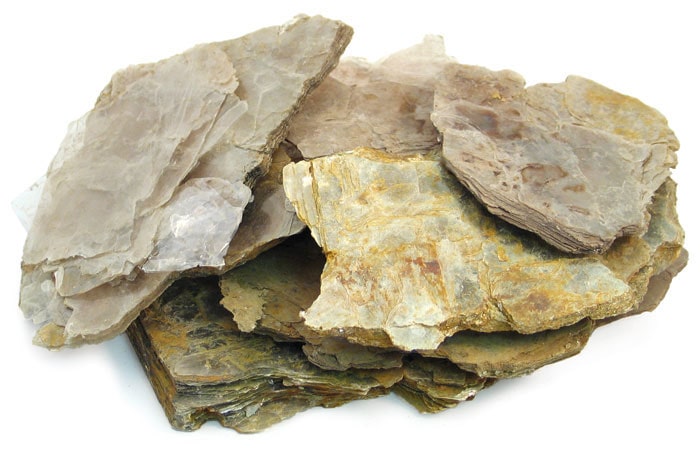Spalling on Stacked Stone Walls
One thing that is both a blessing and a curse when working with natural stone products is that they are just that – natural. As such a stone installation can sometimes do things that are unexpected, especially when compared to a man or machine made product. One of the things we hear about occasionally with our stacked stone products is spalling, which is when small flakes, pieces, and sometimes even thin layers of stone fall off the face of stacked stone wall. First and foremost, this is a natural process and there’s no cause for concern! Now that we have that out of the way, let’s learn all about this unique property that some natural stones exhibit.
To know if a stacked stone wall might be susceptible to spalling the first thing to consider is the type of stone itself. The majority of stones that can exhibit spalling are sedimentary in nature and have cleavage or fracture lines that result in breaks that are thin and can be of varying sizes. Mica is perhaps the most common and probably the most extreme example of a natural stone that exhibits these characteristics since it naturally comes in very thin layers that are easy to split off.

For a stacked stone installation, the most common time you’ll see spalling happen is right after installation. It is at this point that the stone product, whether its a loose stone or part of a panel system like our Rock Panel and XL Rock Panel products, has experienced the most movement that it will ever experience. From the time the stone is quarried, manufactured / fabricated, transported (often multiple times to distribution centers and final destination), and finally installed, it is handled, moved around, jostled and sometimes even slightly abused more in that couple weeks or couple months than it ever will be again. During all that movement, the outermost layer of a stone prone to spalling can start to become loose and sometimes it will even spall off in the packaging, during installation, or shortly thereafter as the stone gets cleaned up post install and acclimates to its new environment (temperature, humidity levels,etc).
Normal spalling should be expected to occur before, during and up to about 6 months after installation as the stacked stone settles into its new home. For exterior installations weather patterns like freeze-thaw cycles or wet-dry cycles can bring an increased amount of spalling, but the amount of debris being removed from the face of a stacked stone wall should diminish over time.
Sealing a natural stacked stone wall isn’t specifically aimed at reducing the amount of spalling that might be happening in a certain installation, but by the very nature of what a sealer is intended to do will help. A sealer, by reducing the amount of water that penetrates into a stone, reduces the amount of movement in stone layers caused by moisture absorption thus helps reduce spalling.
Spalling that is occurring beyond the normal range of time post installation or happening as a result of repeated triggers, such as a freeze thaw cycle, might be the forerunners of bigger problems in a stacked stone installation. If certain steps were missed, such as the application of a water proof membrane in an exterior installation, or if the wrong type of stone is being used for a specific application, such as a stone that is not freeze-thaw rated / tested being used in a cold climate, there could be bigger problems afoot. Contact your stone supplier with information about what is going on and they should be able to help you out.

Thoughtful design consideration is another effective way to handle concerns related to stacked stone walls spalling. Installing stone on the wainscoating of a building is a beautiful look for a residential or commercial building, and if the stone selection is one that is prone to spalling, keeping landscape beds instead of hard surfaces below the stone is a great design idea. Any small pieces of stone that do spall off will end up in the landscaping and go unnoticed. Similarly, if stacked stone is designed to be installed above a pedestrian walkway, such as the entrance to a building, it’s a good idea to consider using a stone like quartz, granite, or slate that is not prone to spalling, or design in a ledge or similar shadowbox feature to catch any spalling.
Thanks for taking a few minutes to learn more about spalling in stacked stone walls. Norstone is a manufacturer of premium natural stone panel systems and tiles and we’re happy to answer any questions you have about our stone products and how they might be suitable for your next project. Contact us today to learn more!
.png)



